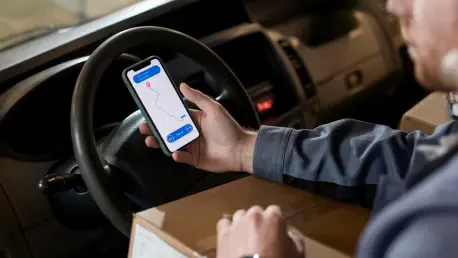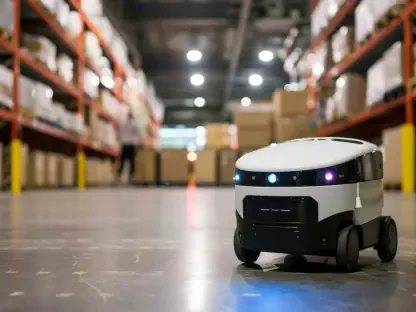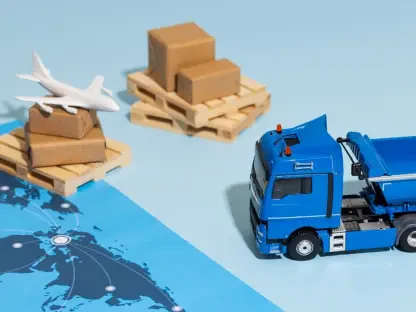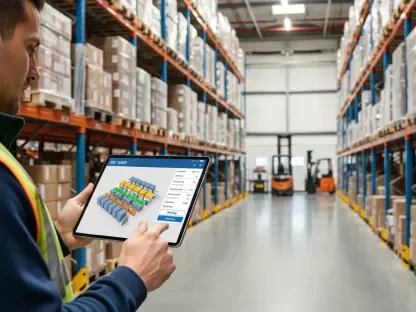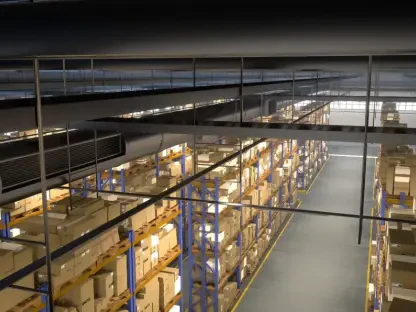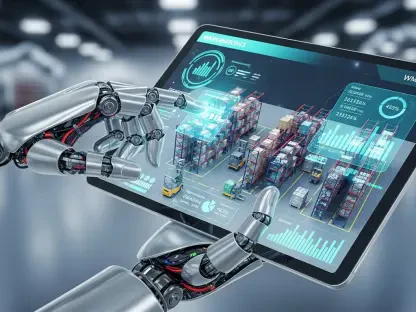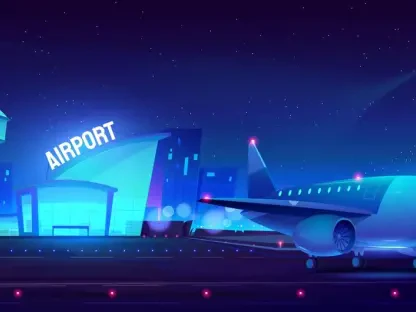What happens when a package’s final journey from warehouse to doorstep becomes the ultimate test of a company’s reputation? In today’s hyper-connected, e-commerce-driven economy, last-mile logistics holds the power to delight or disappoint customers with every delivery, and with consumer expectations soaring—often demanding same-day arrivals—businesses face immense pressure to perfect this critical stage. The stakes couldn’t be higher: a single misstep can erode trust, while seamless execution can build loyalty. This exploration dives into how cutting-edge technology is revolutionizing the last mile, turning challenges into opportunities for efficiency and satisfaction.
The importance of this final delivery stretch cannot be overstated. Last-mile logistics accounts for a staggering 53% of total shipping costs, according to a 2025 industry report by Capgemini, making it the most expensive segment of the supply chain. Beyond cost, it shapes customer perceptions—studies show that 61% of consumers are unlikely to reorder from a retailer after a poor delivery experience. As urban populations grow and online shopping continues to surge, mastering this phase is no longer optional but a strategic imperative. Technology stands as the key to unlocking solutions, offering tools that promise to redefine how goods reach their final destination.
Why the Last Mile Holds Unmatched Importance
In an era where speed and reliability define success, last-mile logistics emerges as the linchpin of customer satisfaction. With e-commerce sales projected to grow by 10% annually from 2025 to 2027, per Statista, the volume of deliveries flooding urban centers is unprecedented. Consumers now expect transparency, precision, and rapid turnarounds, often viewing delivery performance as a direct reflection of a brand’s value. A delay or lost package can trigger negative reviews, impacting future sales far beyond the cost of a single shipment.
This heightened focus on the last mile also stems from its role as the final touchpoint in the customer journey. Unlike earlier stages of the supply chain, which remain invisible to most buyers, the moment of delivery is deeply personal. It’s where promises made online are fulfilled—or broken. Businesses that excel here gain a competitive edge, turning routine transactions into memorable experiences that foster repeat business and word-of-mouth advocacy.
Moreover, the last mile’s significance is amplified by its ripple effect on operational efficiency. Inefficiencies at this stage can bottleneck entire supply chains, driving up costs and straining resources. As companies grapple with these dynamics, the need for innovative solutions becomes clear, paving the way for technology to address both customer-facing and backend challenges with equal impact.
Unpacking the Complexities of Last-Mile Delivery
Despite its critical role, last-mile logistics remains a notoriously difficult puzzle to solve. Urban congestion, unpredictable traffic patterns, and the sheer density of delivery points create logistical nightmares, especially in sprawling cities. These factors often lead to missed time windows, frustrated customers, and skyrocketing operational expenses, with last-mile costs sometimes doubling those of long-haul transport, as noted in a 2025 Deloitte study.
Traditional methods exacerbate these issues, with many companies still relying on manual processes and paper-based systems. Such outdated approaches are prone to human error—think misplaced forms or incorrect addresses—resulting in delayed shipments and wasted resources. Add to this the rising price of fuel and labor, and it’s evident why the last mile is often labeled the most inefficient segment of logistics, draining budgets and testing patience.
Beyond operational hurdles, consumer demand for faster, more flexible delivery options adds another layer of strain. Same-day and on-demand services are no longer luxuries but expectations, pushing businesses to rethink their strategies. Without modern tools to streamline workflows, companies risk falling behind competitors who can meet these evolving needs, highlighting the urgent call for technological intervention.
Cutting-Edge Tools Redefining the Last Mile
Enter technology, the catalyst transforming last-mile logistics from a pain point into a powerhouse. Automated route optimization software, for instance, uses real-time data to map the most efficient paths, slashing mileage and fuel costs by up to 20%, according to a 2025 report from McKinsey. Companies like Amazon have adopted these systems, enabling faster deliveries while minimizing environmental impact through reduced emissions.
Digital platforms are another game-changer, replacing error-prone paperwork with electronic proof of delivery (ePOD) systems. These tools provide instant confirmation of drop-offs, complete with timestamps and signatures, ensuring accountability and transparency. Retail giants implementing ePOD have reported a 30% drop in delivery disputes, directly boosting customer trust and operational clarity, as per a Logistics Management survey from this year.
Data-driven innovations also play a pivotal role, offering precise estimated times of arrival (ETAs) through predictive analytics. By analyzing traffic, weather, and historical patterns, these systems keep customers informed, reducing missed deliveries and enhancing satisfaction. A case study from a leading parcel service showed a 25% improvement in on-time rates after integrating such technology, proving that tech isn’t just a fix—it’s a strategic asset reshaping the delivery landscape.
Industry Voices on Automation’s Strategic Power
Insights from industry leaders underscore that automation isn’t merely a trend but a cornerstone of modern logistics. During a recent Logistics Business roundtable moderated by Editor Peter MacLeod, experts emphasized that digitization offers more than efficiency—it’s a pathway to market dominance. A panelist from Aptean noted, “Automation turns the last mile from a cost center into a loyalty driver, with real-time visibility creating trust that keeps customers coming back.”
The discussion also highlighted tangible benefits beyond operations, pointing to measurable returns on investment. Businesses transitioning to automated systems often see cost reductions of 15-20% within the first year, alongside improved delivery speeds, according to panel data shared during the event. These figures aren’t abstract; they reflect real transformations, like a mid-sized retailer that cut delivery errors by half after ditching manual tracking for digital dashboards.
Perhaps most compelling were the stories of adaptation shared by executives. One logistics director recounted the skepticism their team initially felt about tech adoption, only to witness firsthand how automation streamlined chaotic routes and empowered drivers with actionable insights. Such anecdotes reveal a broader truth: embracing technology isn’t just about solving today’s problems—it’s about building resilience for tomorrow’s demands.
Practical Strategies to Elevate Last-Mile Performance
For businesses ready to harness technology, the path to optimizing last-mile logistics begins with a clear assessment of current gaps. Auditing existing workflows to identify inefficiencies—such as reliance on paper forms or lack of real-time tracking—provides a baseline for improvement. This step ensures that investments target specific pain points, maximizing impact without unnecessary expenditure.
Next, adopting scalable digital platforms can revolutionize both planning and execution. Tools for route optimization and customer communication, accessible via cloud-based systems, allow seamless integration across teams. Logistics managers should prioritize solutions that offer flexibility to grow with demand, ensuring that today’s fix doesn’t become tomorrow’s limitation, while also focusing on user-friendly interfaces to ease staff transitions.
Finally, leveraging automation for visibility offers a dual benefit of cost reduction and enhanced service. Real-time tracking and data analytics enable proactive problem-solving, such as rerouting around delays before they escalate. By starting with pilot programs to test these technologies, companies can refine their approach, building confidence in larger rollouts that ultimately transform the last mile into a competitive strength.
Reflecting on the journey through last-mile logistics, it became evident that technology had reshaped what once seemed an insurmountable challenge. Businesses that had embraced automation witnessed not just operational gains but a redefined relationship with their customers, built on trust and reliability. The stories of transformation—from slashed costs to delighted recipients—painted a vivid picture of progress.
Looking back, the actionable steps taken by industry pioneers stood out as a blueprint for others. Assessing inefficiencies, investing in digital tools, and prioritizing visibility had proven effective in turning logistical hurdles into strategic wins. For any company still navigating this terrain, the lesson was clear: start small, test rigorously, and scale with purpose to ensure the last mile becomes a lasting advantage.
